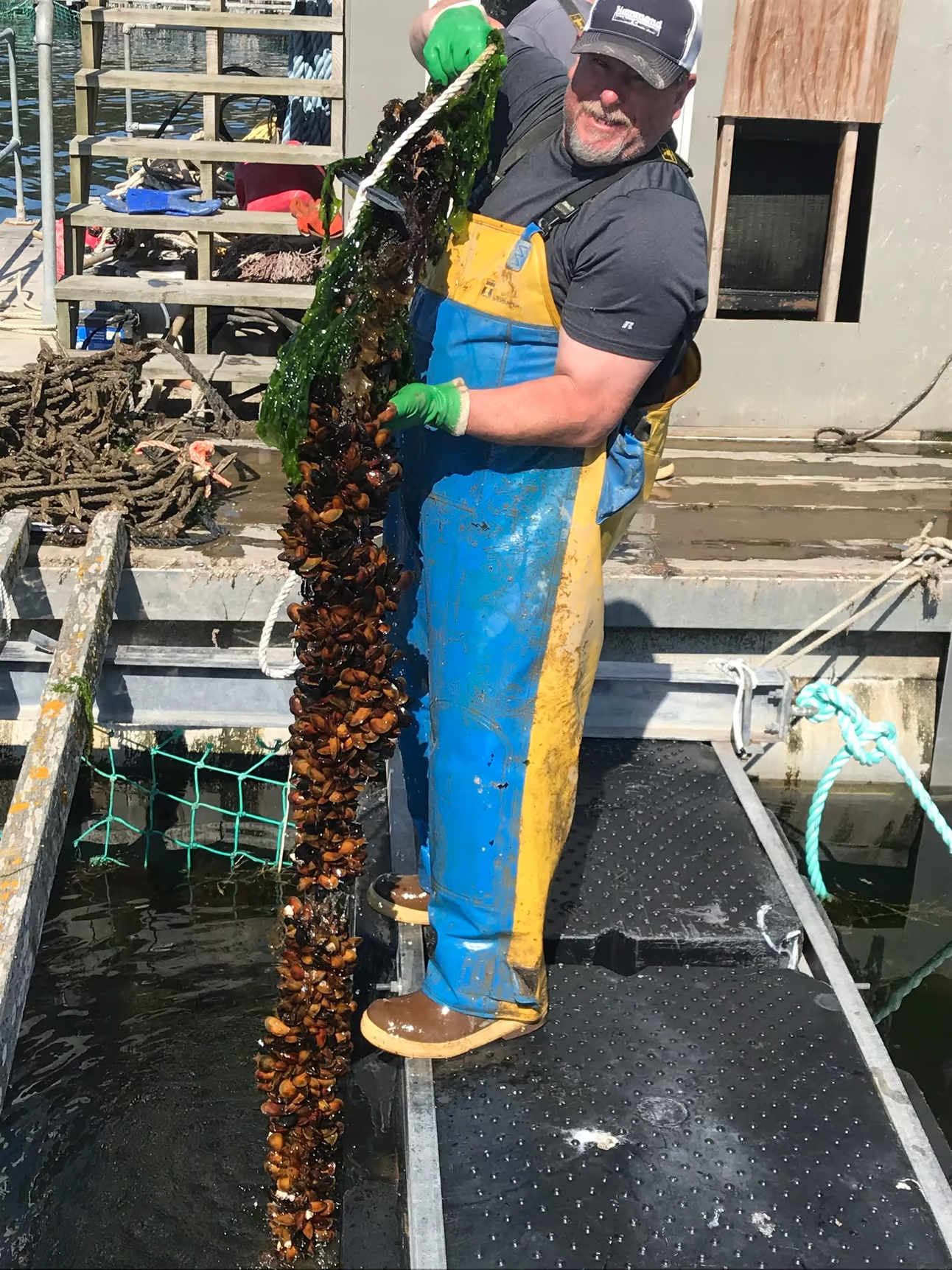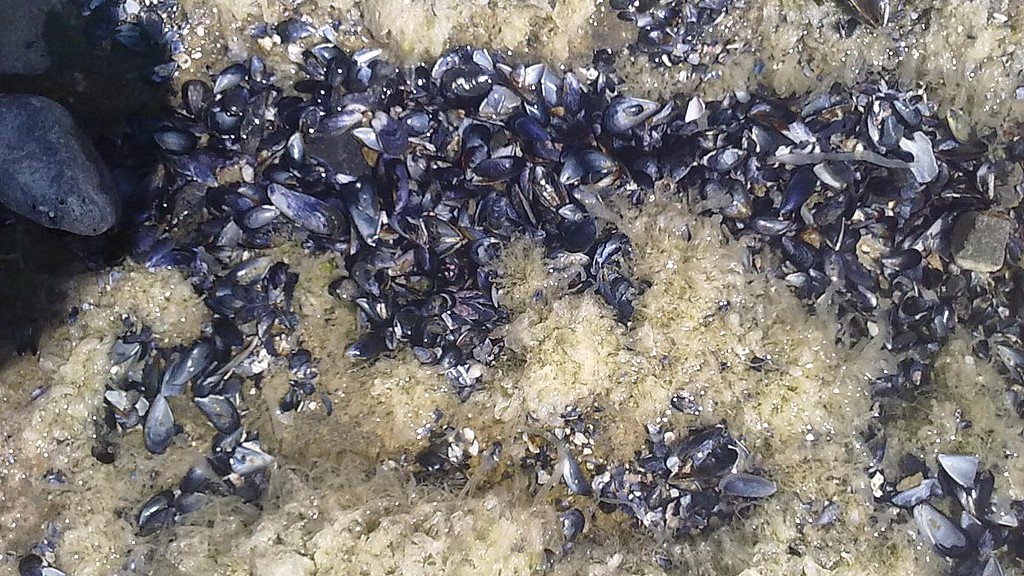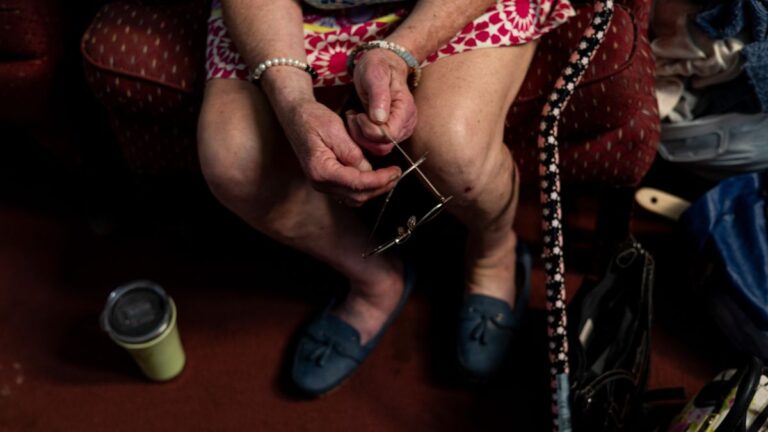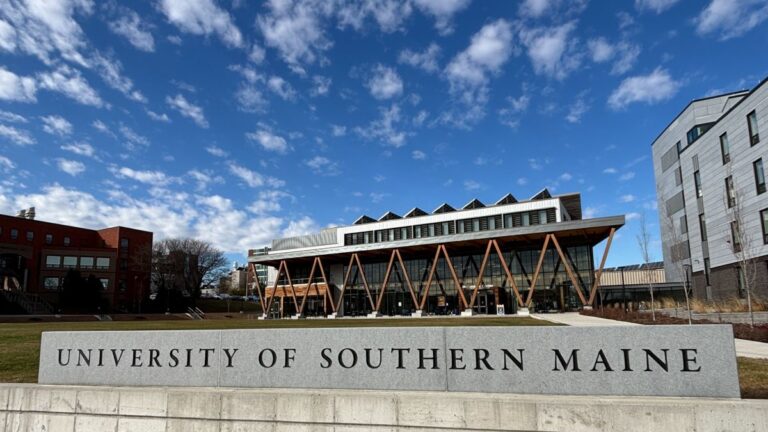About a decade ago, Blue Hill Bay mussel farmer Evan Young noticed it was getting more and more difficult to harvest mussel larvae — known as spat — needed to grow mussels.
“We are seeing less recruitment of wild mussel spat,” he said. ”We used to put lines in the water the first of July and they would attach. The spat would be in the water column for 30 to 45 days. There doesn’t seem to be as much in the water column.”
Experts believe the shortage of spat is due to warming waters and increased predation on the young shellfish due to green crabs, sea squirts and the like. The wild blue mussels population on the Maine coast has dropped 60 percent since the 1970s, according to a 2017 study.
“Whether or not it’s a direct or indirect link between warming waters and mussel spat decline, I don’t think it matters,” said Brian Beals, a marine ecology professor at the University of Maine at Machias and the volunteer director of research at Downeast Institute in Beals.
“If it’s direct, that means the mussels are physiologically not capable of coping with warming waters. If it’s indirect, the warming waters have caused predators to increase.”
Rather than give up on mussel farming entirely, Young decided to adapt, growing stock from seeded rope he buys from the Downeast Institute. The fisherman said he believes he’s the only mussel farmer in Maine growing all of his stock from seeded rope.

Young blames the lack of wild spat on the increased presence of sea squirts (tunicate) and green crabs.
“Sea squirts are the biggest problem right now,” Young said. “They take over like weeds. The depth doesn’t matter. Lobstermen are finding them on their gear as well. We try to put more mussels per foot so there is less room for them to attach.”
Green crabs are less of a problem for Young because the crabs eat wild spat, which he no longer tries to capture.
Spat collection is a critical period for mussel farmers.
In its larval form, spat floats around in the surface layers of water until coming into contact with something to which it can become attached — like a mussel rope — by using hair-like strings called byssal threads.
Young said using spat from Downeast Institute means he can count on a certain size harvest.
“It’s more reliable, more predictable and more sustainable,” he said. “We’ve turned a corner. Things are really progressing. We’re hoping to do 300,000 pounds of mussels this year.”
Young seeds the mussels in late August and early September. It takes 12 to 16 months to grow them to market size, which is 2.5 to 3.5 inches.
Young has sounded the alarm about the disappearance of wild spat for more than a decade.
“Evan called me in 2012 and said, ‘We’re having all kinds of problems collecting wild mussel seed,’ ” said Beals. “At the same time I would be getting calls from the St. George River, Milbridge, Stonington, asking, ‘Where are all the mussels?’ ”
Beals, who believes green crabs are the major culprit, said there was a warming trend from the early to mid 1950s. Soft shell clams were decimated and green crabs proliferated.
“Now we’re in the same spot with mussels,” he said.
Green crabs, he said, are survivors. Although virtually everything in the ocean eats them, the crabs reproduce more than any other species in the marine ecosystem.
“The only thing that can keep them in check is cold weather,” Beals said. “And we haven’t seen cold weather for any extended periods of time in decades.”
In addition to hunting and eating their prey, green crabs destroy seagrass and out-compete local species for food and habitat. They also destroy eelgrass habitat that larval fish use to hide from predators.
Green crabs were introduced to North America in the 1880s, most likely in ballast water of merchant ships from Europe. They may also be transported with shellfish, equipment or packing materials in aquaculture operations.
Faced with these dual, climate-related threats, Young has successfully revised his operation.
“We are harvesting three times a week right now, as well as getting things ready for the season. We will be putting hatchery seeded lines in our nursery as soon as next week,” he said.
Editor’s Note: The spelling of tunicate has been corrected.







